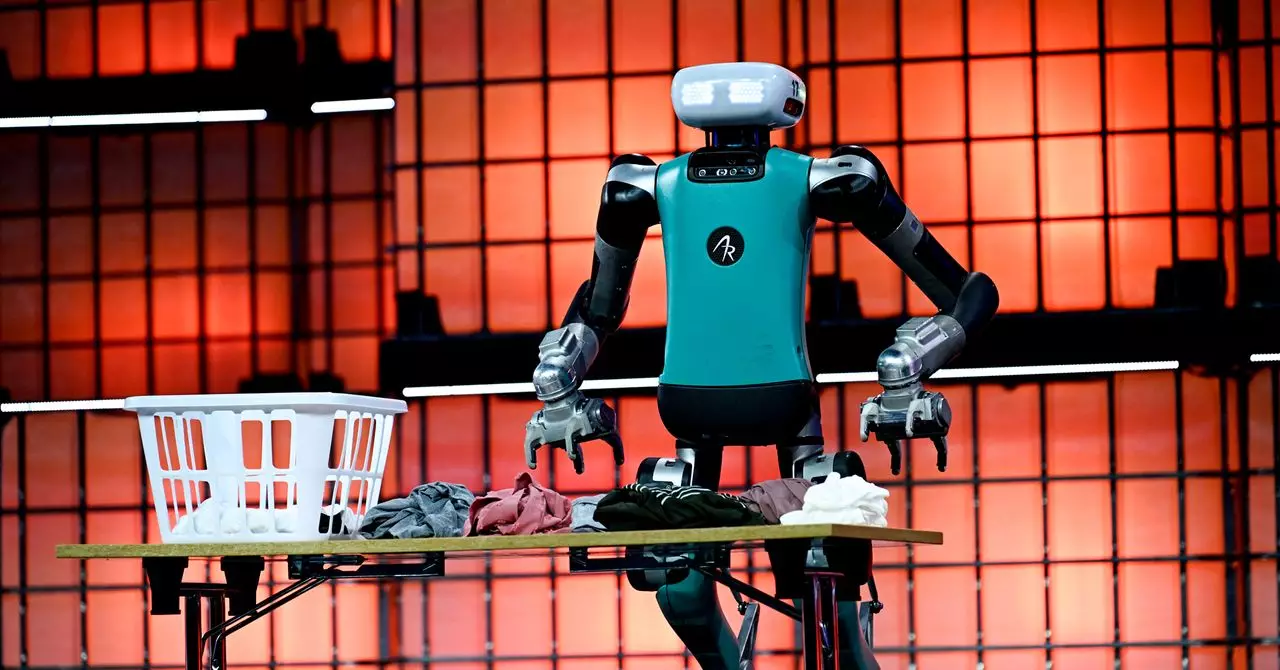In a landmark development, Boston Dynamics is set to revolutionize manufacturing with its humanoid robot, Atlas, which will soon commence operations in a Hyundai manufacturing facility. This all-electric successor to the hydraulic Atlas, which has garnered global attention for its impressive demonstrations since 2013, signifies a significant shift in the automation landscape. While robots such as Spot and Stretch have already made significant inroads into industrial environments, Atlas’s deployment heralds the emergence of humanoid robots in commercial manufacturing for the first time. The anticipated impact is monumental: the aim is for Atlas to outperform human capabilities in strength and reliability. According to Kerri Neelon, a spokesperson for Boston Dynamics, Atlas is engineered to tackle tasks traditionally challenging for humans, such as lifting heavy and awkward loads.
Riding the Humanoid Wave
Atlas is not set to embark on its journey alone; it joins a growing cohort of humanoid robots poised to enter real-world applications by 2025. Agility Robotics’ Digit has already begun to make its mark by facilitating material movement within warehouses, while Figure’s eponymous biped has started to reach commercial clients. This burgeoning market is not just limited to specialized companies—hypothetical interest from tech titans like Apple and Meta in humanoid robotics indicates a significant shift in consumer relations. A recent Goldman Sachs projection underscores this transition, estimating that the humanoid robot market could skyrocket to $38 billion by 2035, a staggering increase that reflects a burgeoning trust in automation.
The promise of humanoid robots lies in their adaptability. Unlike traditional assembly lines, where automation is tailored explicitly for repetitive tasks, humanoid robots like Atlas can switch between jobs, mimicking the versatility of their human counterparts. Jonathan Hurst, cofounder of Agility Robotics, highlights that while purpose-built automation may excel in performance for specific tasks, robots like Atlas can enhance productivity in scenarios that lack continuous operational demands.
Challenges on the Horizon
However, the road to widespread adoption of humanoid robots is fraught with challenges. For example, Tesla’s highly anticipated Optimus robot has faced scrutiny since its announcement in 2021. A demo revealed that the showcased robots were still reliant on human controllers, raising crucial questions about the level of autonomy expected with such advanced technology. Elon Musk’s pledge to manufacture a “few thousand” Optimus units for 2025, contrasted with the production uncertainties caused by restrictions on rare-earth metals, illustrates the complexities that persist in the field.
Moreover, retrospective analysis indicates that human workers are not merely replaceable cogs in the machinery. Although humanoid robots like Atlas promise efficiency, companies must consider the socio-economic implications of displacing human labor. While technical progress is desirable, it raises ethical dilemmas and challenges about workforce management. It is essential to balance technological zeal with the empowerment of human workers, ensuring that the integration of humanoid robots complements rather than replaces human labor.
The Human-Centric Design Philosophy
Boston Dynamics continually stresses a “human-first” design philosophy, promoting the notion that robots should function in tandem with human environments rather than reshape them entirely. Neelon’s assertion that our world is inherently designed for humans highlights an essential consideration for the future of robotics. In this landscape, Atlas is not just another assembly line tool; it symbolizes a paradigm where robots enhance human capabilities rather than rendering them obsolete.
This collaborative approach is vital for the transition towards integrating humanoid robots into various sectors beyond manufacturing, fostering an environment where humans and robots can co-exist and contribute to productivity synergistically. As these advanced machines begin to navigate complex human-centric environments, the potential for disruptive innovation is immense. However, the challenges will necessitate thoughtful implementation to harness the benefits of humanoid robots while safeguarding the human workforce against displacement in this evolving economic landscape.

